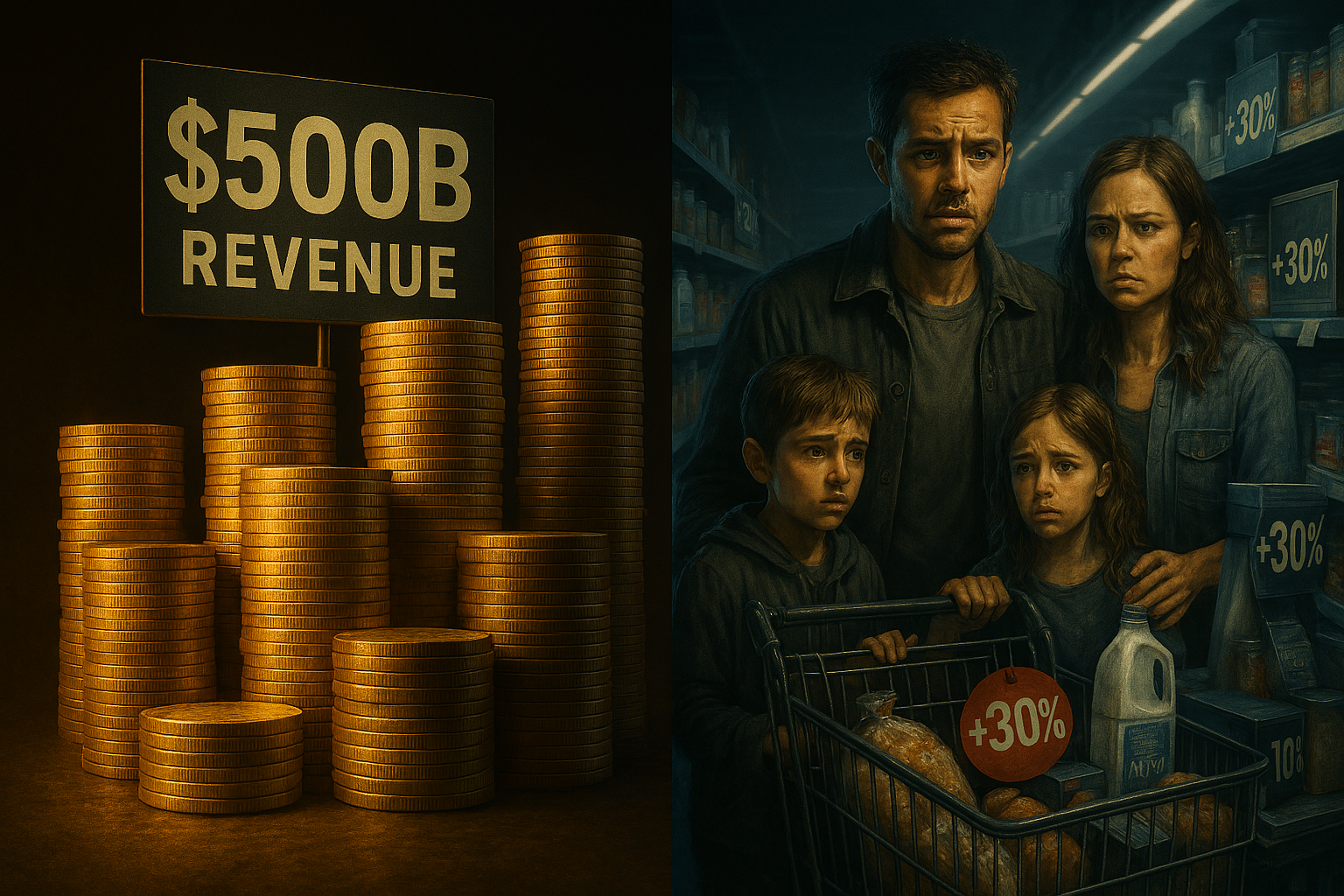Trump Tariffs Revenue 2025: Economic Impact Analysis

Former President Donald Trump’s proposal for universal 10% tariffs has ignited fierce economic debate. Announced in August 2025, this sweeping trade policy targets nearly all imports to generate Trump tariffs revenue 2025, which Trump claims could eliminate the federal deficit. But economists warn of hidden costs: inflation spikes, consumer price hikes, and potential global retaliation. With revenue projections ranging from $300 billion to $500 billion annually, we analyze whether this bold strategy could backfire on American households.
Trump’s Tariff Blueprint: Key Details
The policy would impose a flat 10% levy on all imported goods—expanding beyond Trump’s first-term industry-specific tariffs. Key features:
- Applies to everything from electronics to pharmaceuticals
- Aims to replace income tax revenue and reshore manufacturing jobs
- Campaign estimates $500B in annual Trump tariffs revenue 2025
- Independent analysts project $300B-$400B after import reductions
Revenue Projections: Reality Check
Economists dispute the $500B revenue claim due to three critical factors:
- Import elasticity: Higher prices could reduce demand by 15-25%
- Supply chain shifts: Companies relocating production to tariff-exempt nations
- Retaliation risk: EU/China threatening counter-tariffs on U.S. exports
Major estimates:
- Trump Campaign: $500 billion
- Tax Foundation: $300 billion
- Peterson Institute: $350 billion
Consumer Impact and Inflation Risks
Middle-class families could bear the heaviest burden:
- $2,500 average annual cost increase (JPMorgan estimate)
- Low-income households spending 30%+ of income on tariff-affected goods
- Inflation spike of 2-3 percentage points in 2026 (Moody’s Analytics)
Electronics, automotive, and apparel sectors face severe supply chain disruptions.
Deficit Reduction: Viable Solution or Political Theater?
Trump’s claim that tariffs alone erase the $1.6 trillion deficit faces skepticism:
- Even $500B revenue covers just 30% of the deficit
- Tariffs may slow GDP growth by 0.5-1.0% (CBO)
- $15B-$20B needed for Customs and Border Protection expansion
As the Brookings Institution notes: “Tariffs are taxes on consumers disguised as trade policy.”
Global Reactions and Market Uncertainty
Trading partners are preparing countermeasures:
- EU drafting retaliatory tariffs on U.S. agriculture
- China threatening rare earth mineral export restrictions
- Mexico accelerating “friendshoring” deals with Canada/Brazil
Financial markets reacted sharply: S&P 500 futures dropped 1.8%, while bond yields surged on inflation fears.
Conclusion: Balancing Revenue and Economic Risk
The Trump tariffs revenue 2025 proposal offers high revenue potential but carries substantial risks: consumer price hikes, trade wars, and unequal economic pain. While theoretically generating $300B-$500B annually, it may ultimately cost more than it gains. The critical question remains: Can tariffs be a deficit solution without crippling everyday Americans?










